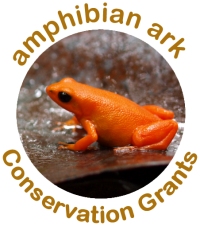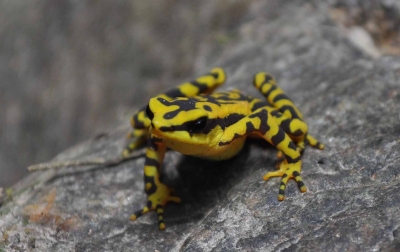AArk has offered grants since 2009, and in the past fourteen years, we have provided funding totaling almost US$237,000 to fifty projects in twenty-two countries. We are excited to announce our 2023 conservation grant winners: one start-up project (US$5,000, based in Peru) and one extension grant ($4,000, based in Venezuela). We are offering a second round of opportunities later this year, so this list is likely to grow.
Details of all of our grants, including guidelines and deadlines for lodging applications, can be found on the Conservation Grants page.
AArk is grateful to the following individuals and organizations for their support of our Conservation Grants: Anne Baker and Robert Lacy, Bernard and Nancy Karwick, Ronna Erickson, Woodland Park Zoo.
The successful projects this year are:
Startup Grant
- Towards the return of the Patagonia frog (Atelognathus patagonicus) to Laguna Blanca, Argentina
Project Leader: Paula González Ciccia, Fundación Temaikèn, Argentina
The Patagonia frog, Atelognathus patagonicus, is an endemic, critically endangered species that lives in a small number of basaltic lagoons in Patagonia. During the last decade, populations of this species have declined by more than 90%. The largest local population of this species inhabited Laguna Blanca, and was in contact with other populations that resided in neighboring smaller lagoons. The illegal introduction of fish into Laguna Blanca caused the extinction of the largest population of the Patagonia frog species. In the neighboring lagoons, a combination of threats that include the eutrophication of the environment due to the presence of livestock, the existence of emerging diseases such as chytrid fungus and ranavirus, as well as the drying up of small lagoons caused by the climate change, have this species at the limit of its survival. The National Parks Administration (APN) began a series of projects aimed at evaluating and controlling the population of exotic fish in Laguna Blanca in order to restore its ecological conditions. They have managed to reduce the abundance of fish, thus promoting a more suitable habitat for native species, including the Patagonia frog. However, natural recolonization by the Patagonian Frog is unlikely due to the small size of the neighboring populations and the poor state of the corridors between the lagoons. APN and the Foundación Temaikèn joined forces to rescue individuals from desiccated temporary lagoons and establish a survival colony for ex situ breeding purposes. While the APN and the UNLP work on in situ on habitat restoration (e.g., exclusion of livestock and the creation of limnocorrals), we will develop a reproduction program that will hopefully generate individuals to carry out experimental recolonization. The final goal of this project is to return the Patagonia frog to Laguna Blanca, its main reproductive environment.
Startup Extension Grant
- Ex situ rescue of the Rancho Grande harlequin frog (Atelopus cruciger) in Venezuela
Project Leader: Margarita Lampo, Fundación para el Desarrollo de las Ciencias Físicas, Matemáticas y Naturales (FUDECI) & Leslie Pantin Zoo
The Rancho Grande harlequin toad (Atelopus cruciger) continues to be the only harlequin toad with two known large subpopulations in Venezuela. Explorations during the last three years have failed to detect new populations.
During 2022–2023, we established the Centro para la Reproducción e Investigación de Arlequines (CRIA) with two units, one at the Foundation for the Development of Physical, Mathematical, and Natural Sciences (FUDECI) in Caracas and another at the Leslie Pantin Zoo in Turmero, where an ex situ program for the Rancho Grande harlequin toad was initiated. The program currently supports 22 founders from one subpopulation in Cuyagua and a cohort of 35 F1 tadpoles in stages 34–38. At the Leslie Pantin Zoo, an exhibit on the Rancho Grande harlequin toad was set up as part of an educational program aimed at raising public awareness about the threats that this species currently faces. Our program was able to secure funds for CRIA’s operation–thanks in part to Amphibian Ark– during its first 18 months as well as for exploring potential sites for future releases. With Amphibian Ark’s Extension Grant, we expect to obtain F1 individuals from various parents to increase the size and genetic diversity of the captive population for future release. Funds will be applied to increase husbandry capacity, to replenish consumables and spare parts to secure CRIA ́s operation for 2023-2024.









